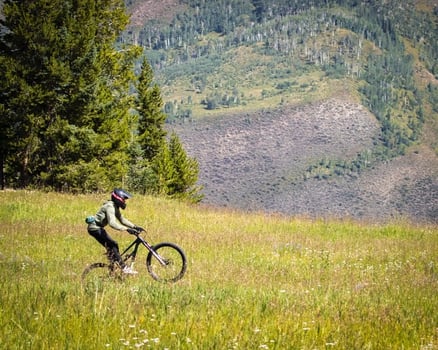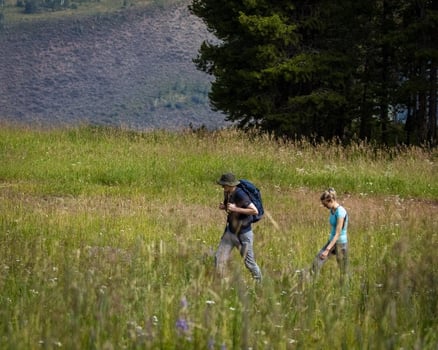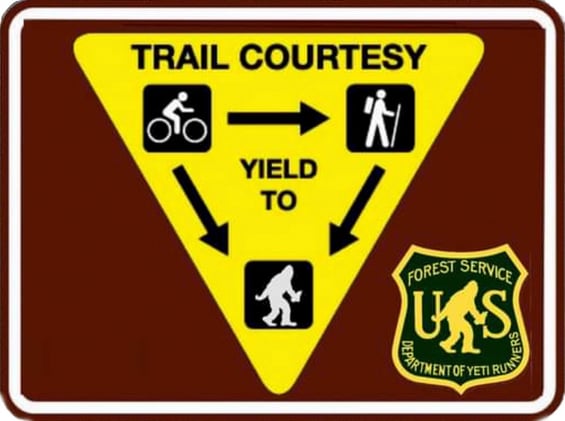Sharing the trails, etiquette, and safety.
Have you ever noticed the number of different wildlife and human-made tracks on our recreational trails on our public lands? Did you notice deer and elk tracks, or question whether you saw a coyote or fox paw print mixed in with human footprints, bike tire tracks, and horse hoof prints? How about scat, animal droppings, and horse manure? It’s interesting to know, and best for our safety to know, how many of us share the trails and what the proper etiquette is when we meet fellow trail users in the backcountry. There is an essential nexus of compatibility, and an adverse impact on wildlife where we recreate. Observing the rules of the trail will keep us all safe and happy out there.
 There are many trails in Eagle County that are used in many ways. Trail Courtesy can make travel on those trails safer and more enjoyable.
There are many trails in Eagle County that are used in many ways. Trail Courtesy can make travel on those trails safer and more enjoyable.
First, we all need to adhere to posted trail closures in wildlife migration corridors, for calving in the spring, and in the winter when wildlife are most vulnerable, or in areas where old trails are closed for restoration. Next, always give wildlife the right of way and avoid them, observe from afar, take a picture, but don’t move in close to wildlife – leave them alone. Yielding to wildlife or if possible, fully avoiding them protects them and keeps us safe. Wildlife, whether predators or prey species are not comfortable with the presence of humans, please respect that and understand that the fear we cause decreases wildlife’s ability to survive when we surprise or scare them. Imagine how our bodies react with fear if we encounter a bear or mountain lion on our public lands and wilderness areas, wildlife have the same fear, but a much more heightened physiological level in response to us.
We are lucky to live and recreate in Eagle County with its vast expanse of Wilderness Areas, U.S.Forest Service, and BLM lands that are all part of our public land system. The White River National Forest, Holy Cross Wilderness and the Eagles Nest Wilderness cover approximately three-quarters of the county; BLM lands reach into the northwest corner of the county, and we have a smattering of small, interspersed state public lands.
Bureau of Land Management, Colorado Parks and Wildlife, and U.S.Forest Service Logos
The Wilderness Act of 1964 was passed by Congress to “establish a National Wilderness Preservation System for the permanent good to the whole people, and for other purposes “(16 U.S.C. § 1331-1340, Preamble). Included in the Wilderness Act is that wilderness is “an area where the earth and its community of life are untrammeled by man, where man himself is a visitor who does not remain”. For trail use as recreationalists, two characterizations in the Act to note are that these public lands are “1) affected primarily by the forces of nature, with the imprint of man’s work substantially unnoticeable; 2) have outstanding opportunities for solitude or a primitive and unconfined type of recreation.”
In Eagle County, our outstanding opportunities to recreate on public lands are managed by Colorado Parks and Wildlife, the USFS and the BLM. The staff and employees are trained professionals who carry a wealth of useful knowledge and skills to manage the diverse expanses of lands and recreational trails while protecting wildlife and the wilderness in a public trust for us, as U.S. citizens. Since the United States designates public lands in different ways and restricts some kinds of use depending on the mode, pay attention to signs that indicate who's out there. For example, many trails are non-motorized, hiking and biking only but most allow horseback riding.
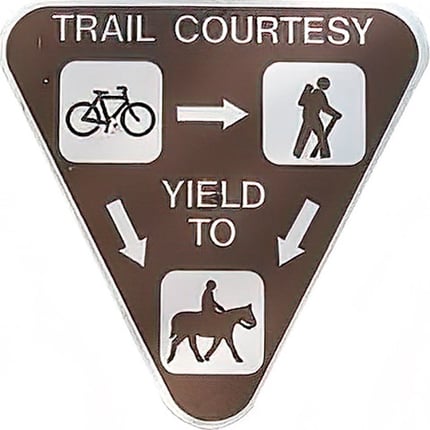

Brown Sign: Bicycle riders should yield to all other users Yellow Sign: All trail users should yield to horses.
Remember that wildlife enjoys our man made trails as well, keep an eye out for different types of tracks and excrement to see who’s nearby sharing the trail. It’s fun to identify whose tracks and excrement they are. Many apps for identification, and small, backpack size books exist with sketches or color photos of footprints and excrement for identification.
Deer and elk droppings and fox scat are most common, but bear scat will begin to appear more frequently as we approach fall. Take note of how fresh droppings and scat look and be aware, especially of bear scat now that the berries are starting to appear on bushes and shrubs.
Coyotes mark their territory with excrement that is often in the middle of the trail, it can be numerous on trails where there is open landscape. Coyotes sometimes attack dogs, if you see evidence of coyotes, they may have taken up residence nearby so keep dogs on a leash and pets protected.
Foxes are also present, they are opportunistic omnivores, they feed on ground nesting birds and small mammals as well as berries and other types of vegetation. They are more habituated to humans than many other species we encounter and can excite dogs on the trail. It is best practice to keep dogs on a leash or under voice control as you never know what wildlife is just around the corner.
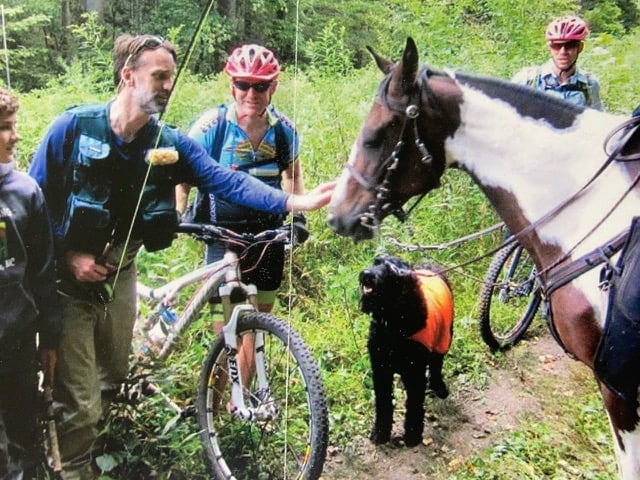 Many types of users on our public lands share the trail and know who has the right of way…in this case, equestrians. Photo: Ashley Johnson
Many types of users on our public lands share the trail and know who has the right of way…in this case, equestrians. Photo: Ashley Johnson
Many of our public land trail systems are multi-use with rules of the trail for safety for maximum enjoyment. Basic guidelines are to keep your ears and eyes open and watch for signs of wildlife in the area, keep pets under control – pets can cause conflict with wildlife and other trail enthusiasts, yield the right of way to those passing from behind or those traveling uphill, and on shared trails with equestrians. Please be aware that equestrians have the first right of way among human user groups.
Although you may be surprised by trail users on horseback, please allow them a wide berth and keep dogs on a leash or at your feet as you yield to equestrians when they pass by. The safety of the horse, rider, and you are dependent upon these simple steps, slow down when site-lines are limited and pay attention to human and horse hoof tracks on the trail to be alert of all others who may be out there at the same time.
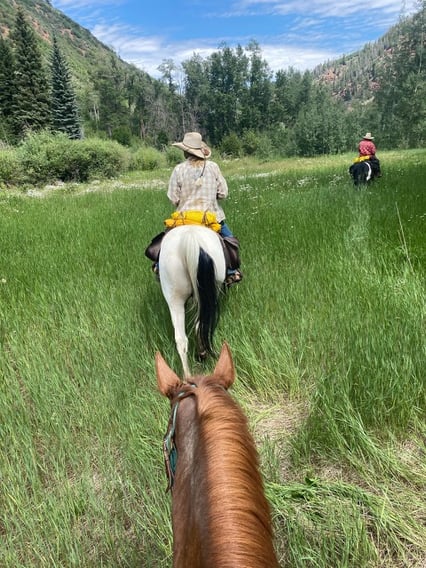 All trail users should yield to equestrians. Photo: Kathryn Middleton
All trail users should yield to equestrians. Photo: Kathryn Middleton
To reduce conflict among users it is important to know the “rules of the trail” and who yields to whom. First and foremost, wildlife has the right-of-way, always stop, look, listen, and be prepared for wildlife encounters. Wildlife likely hears us long before we see them. Hikers and bikers look up, gaze around you in case there is a deer or moose in the midst, although elk are less likely to be visible during the summer and tend to be at higher elevations after calving, they are still around.
The Vail Valley Trails Alliance (vvmta.org) and the Mountain Trekkers chapter of the Back Country Horsemen of America (mountaintrekkers.org) both have comprehensive information on trail usage and etiquette.
Bikers should yield to all other trail users. Hikers only need to yield to equestrians.
If you are unsure of who has the right of way, here are the correct guidelines to remember for yielding from American Trails (americantrails.org):
● Yield the right of way to those passing you from behind or traveling uphill.
● Motorized vehicles yield to mountain bikes, runners, hikers, and horses.
● Mountain bikes yield to runners, hikers, and horses.
● Runners and hikers yield to horses
Some areas of the country have other Trail Courtesies!
Multi-use trails in Eagle County are common and easily accessible due to the proximity of Interstate-70 which promotes a wonderful wilderness experience, but also means we are closer to wildlife than people expect. It is our job to support national, regional, and local agencies who have worked hard to design, manage, and allow usage on our public lands for our enjoyment while protecting our wildlife and mountain ecosystem. So, get out there, be safe, and enjoy what Eagle County has to offer!


 There are many trails in Eagle County that are used in many ways. Trail Courtesy can make travel on those trails safer and more enjoyable.
There are many trails in Eagle County that are used in many ways. Trail Courtesy can make travel on those trails safer and more enjoyable.
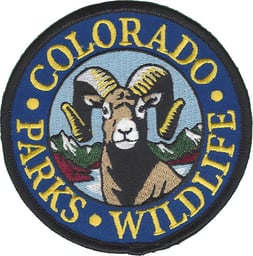




 All trail users should yield to equestrians. Photo: Kathryn Middleton
All trail users should yield to equestrians. Photo: Kathryn Middleton